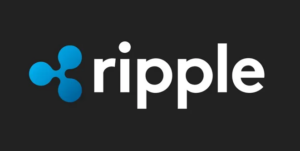Charles Hoskinson’s Transition from Ethereum to Cardano Blockchain Explored

Charles Hoskinson, a pivotal figure in the world of blockchain technology, is propelling Cardano towards full decentralization with the Voltaire phase, which empowers the community by granting governance control. His vision for Cardano is deeply rooted in robust scientific research, with the ultimate goal of tackling real-world challenges through innovative blockchain solutions.
The journey of Charles Hoskinson, from his beginnings as a mathematics and cryptography student to his current role as the driving force behind Cardano, is not just a personal success story but a reflection of the evolving landscape of decentralized technology.
Hoskinson’s fascination with technology and mathematics began early in life, leading him to study these subjects at Metropolitan State University of Denver and the University of Colorado Boulder. While he did not complete his Ph.D., his academic foundation laid the groundwork for his future endeavors in the blockchain industry.
His career took off with the establishment of BitShares, a pioneering decentralized exchange, followed by his involvement in Ethereum, a groundbreaking project in the realm of cryptocurrencies. As a co-founder of Ethereum, Hoskinson played a crucial role in its early development, including the successful launch of its initial coin offering (ICO), which set the stage for Ethereum’s emergence as a prominent blockchain.
However, diverging views on governance and project direction with Ethereum’s other co-founders led Hoskinson to part ways and embark on a new venture that culminated in the creation of Cardano.
In 2015, Hoskinson, along with Jeremy Wood, co-founded Input Output Hong Kong (IOHK) with the aim of developing a more secure and scalable blockchain platform. This endeavor resulted in the launch of Cardano in 2017, a platform distinguished by its emphasis on scientific research and peer-reviewed development processes.
Cardano’s architecture was meticulously designed to address the shortcomings of previous blockchains, prioritizing sustainability, scalability, and security. The platform’s innovative proof-of-stake (PoS) consensus mechanism, Ouroboros, stands out for its energy efficiency, aligning with Cardano’s long-term sustainability objectives.
Despite facing both acclaim and criticism for his rigorous scientific approach, Hoskinson remains steadfast in his belief that a methodical and research-driven strategy will yield a resilient and high-performing blockchain platform.
Looking ahead, Hoskinson’s focus has shifted towards achieving complete decentralization for Cardano. The upcoming Voltaire phase aims to implement a robust on-chain governance structure, enabling the Cardano community to take charge of the network’s development.
Beyond technological advancements, the Voltaire era symbolizes a philosophical shift towards genuine decentralization, empowering the community with decision-making authority previously held by centralized entities.
Hoskinson’s dedication to education, community engagement, and innovation mirrors his broader vision for blockchain technology as a tool to address pressing societal issues. Projects like Midnight, a privacy-focused sidechain running alongside Cardano, exemplify his commitment to leveraging decentralized systems for transparent and equitable solutions.
Through active communication with the Cardano community and a relentless pursuit of innovation, Hoskinson continues to drive Cardano towards its full potential, undeterred by external narratives that may overshadow the project’s progress. His unwavering focus on long-term goals and real-world impact underscores his belief in the transformative power of blockchain technology.




